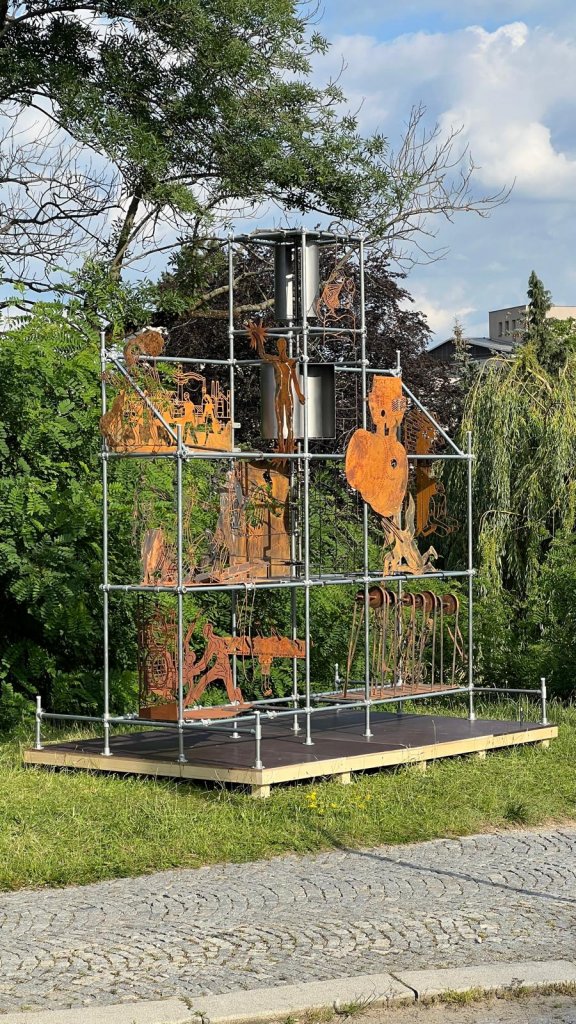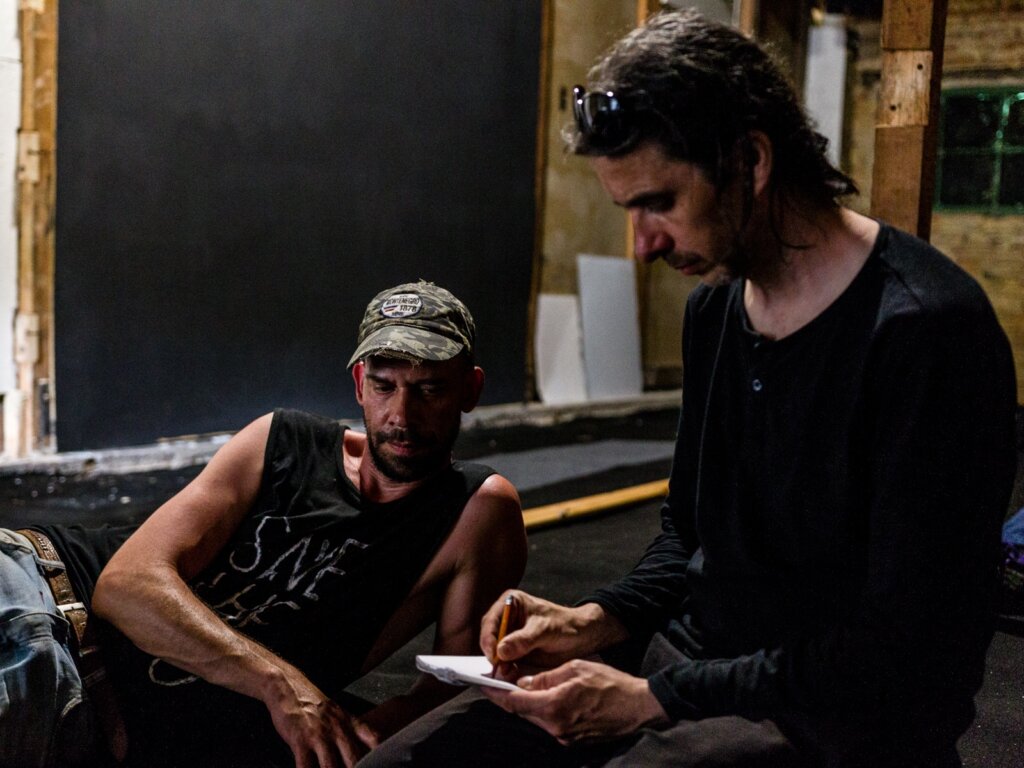SEFO 2024 TRIENNIAL HEADED TO THE FACULTY HOSPITAL OLOMOUC

After the Upper Square and the Square of National Heroes, the SEFO 2024 Triennial also headed to the Olomouc Faculty Hospital. In front of the Theoretical Institutes of the Faculty of Medicine, the Luddite Automation building was installed. Its authors are Hungarian artists Tamás Kaszás and Krisztián Kristóf called Randomroutines.
In the work “Luddite Automation” (2024), Randomroutines address the ever-relevant question of the role of work in people’s lives, and what will come after its end. The Luddite movement, which emerged in the first half of the 19th century in England, can be viewed in the context of contemporary fears of the rise of artificial intelligence.

Faculty Hospital Olomouc

Faculty Hospital Olomouc
The Luddites fought against the mechanization of work by destroying the machines that were to replace them. The reason was simple: they lived in a society where the only capital a worker had was time, which he could exchange for work. From the perspective of today’s precariat, who have long lost the concept of time, the efforts of the Luddites depicted as a physical struggle between man and machine seem almost grotesque. In the large installation, the attacks of the radicalized crowd and the uncompromising performance of the machines are animated using a wind turbine and mechanical transmissions. Neither man nor machine has control over their movement or fate. Fear of the future is universal. Thus, the machines are attacked not only by workers from the peak of industrialization, but figuratively also by prehistoric hunters, contemporary IT specialists, data analysts, and future apocalypse survivors.
The installation, assembled from cut steel plates, is anchored on a scaffolding structure resembling a factory. The individual figurative scenes depict the struggle between luddites and machines in a visual style inspired by historical workplace accident prevention posters, early labor movement agitation flyers, and the visual language of Otto Neurath and Gerd Arntz. Some of the figurative scenes are animated using a wind turbine at the top of the structure and mechanical transmissions, similar to an animatronic puppet theater. The machines, powered by renewable energy, wear out through friction, and their endless movement ironically leads to their own destruction.
Randomroutines

Randomroutines, the Budapest-based artistic duo of Tamás Kaszás and Krisztián Kristóf, have been active on the art scene since 2003. Their collaborative work, diverse in both media and themes, is united by material experiments, a punk ethic, and an interest in humanity and human labor. Although they have developed a recognizable style in the form of spatial drawings made from welded rebar rods, they continue to seek other, programmatically random means. As artists from post-Soviet Central Europe, they are exposed to the re-evaluation of the history of building socialism and the ongoing transformation. Their specific experience built on the ruins of communism allows them to work with the aesthetics of socialist realism as a comic strip, retelling or even completing the history of the labor movement. The bright future is over, replaced by apocalypse, entropy, and a return to the fist axe.
The Luddites fought against the mechanization of work by destroying the machines that were to replace them. The reason was simple: they lived in a society where the only capital a worker had was time, which he could exchange for work. From the perspective of today’s precariat, who have long lost the concept of time, the efforts of the Luddites depicted as a physical struggle between man and machine seem almost grotesque. In the large installation, the attacks of the radicalized crowd and the uncompromising performance of the machines are animated using a wind turbine and mechanical transmissions. Neither man nor machine has control over their movement or fate. Fear of the future is universal. Thus, the machines are attacked not only by workers from the peak of industrialization, but figuratively also by prehistoric hunters, contemporary IT specialists, data analysts, and future apocalypse survivors.
The installation, assembled from cut steel plates, is anchored on a scaffolding structure resembling a factory. The individual figurative scenes depict the struggle between luddites and machines in a visual style inspired by historical workplace accident prevention posters, early labor movement agitation flyers, and the visual language of Otto Neurath and Gerd Arntz. Some of the figurative scenes are animated using a wind turbine at the top of the structure and mechanical transmissions, similar to an animatronic puppet theater. The machines, powered by renewable energy, wear out through friction, and their endless movement ironically leads to their own destruction.
Randomroutines

Randomroutines, the Budapest-based artistic duo of Tamás Kaszás and Krisztián Kristóf, have been active on the art scene since 2003. Their collaborative work, diverse in both media and themes, is united by material experiments, a punk ethic, and an interest in humanity and human labor. Although they have developed a recognizable style in the form of spatial drawings made from welded rebar rods, they continue to seek other, programmatically random means. As artists from post-Soviet Central Europe, they are exposed to the re-evaluation of the history of building socialism and the ongoing transformation. Their specific experience built on the ruins of communism allows them to work with the aesthetics of socialist realism as a comic strip, retelling or even completing the history of the labor movement. The bright future is over, replaced by apocalypse, entropy, and a return to the fist axe.